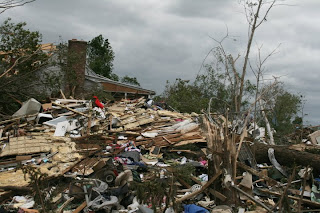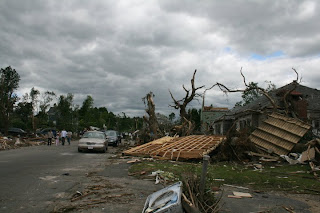Pandemic is a young adult novel published in May 2014 by Sky
Pony Press. During a deadly contagious outbreak, one teenage girl must face
disease, death, and her personal demons in order to survive.
Is this your first book? Second? Third. . .? (Feel
free to list them all.)
Pandemic was
my debut novel. I’ve also written two nonfiction books for teens: Avril Lavigne
(a biography of the singer) and Publishing
(about careers in the field).
(You can find more info on Yvonne's books here.)
Who is the intended audience for this book and why do
you think they should read it?
Pandemic is for
people ages 12+ who like survival stories. With Ebola in the news, Pandemic gives readers a way to think
about a contagious disease in a fictional world. School Library Journal said,
"This is an engrossing apocalyptic story, told through Lil’s eyes and
newsfeeds as her neighborhood, then the East Coast, and finally the entire U.S.
buckles to its knees as the pandemic spreads. . . . Themes of friendship
and coming together in a crisis carry the novel."
What is your favorite thing about the main character?
Lilianna
is resilient and good-hearted.
Where did the idea for this book spring from?
I find natural disasters and contagious
diseases particularly worrisome, so these types of unpredictable situations
have always been on my radar. When the Swine
Flu pandemic occurred in 2009, it wasn’t particularly lethal, but it did make
me wonder. What if a virus was extremely contagious and caused a high death rate? And what if a teen girl had to
survive the outbreak on her own?
Tell us an unknown fact about the book.
Mr. B
(the antagonist) was originally called Mr. D. During Pandemic’s final edits, my son switched to a school with a
principal named Dr. D. Since the character is an evil man, I thought it would
be wise to change the name. J
Tell us a little bit about you.
I grew up
on Long Island and now live in New Jersey with my husband, two teens, two dogs,
and some random fish. I write from home and am currently working on a
psychological thriller set in Hoboken.
Give us a strange but true fact about you.
After attending an SCBWI
conference and presenting a draft of Pandemic’s
first page for critique, I returned home from the weekend with a horrible case
of the flu. (The irony!) I took notes afterward and used parts of my delirium
in later chapters of Pandemic.
If you could meet one famous person, dead or alive,
who would it be and why?
If your main character could meet one famous person,
dead or alive, who would it be and why?
Lilianna
would want to meet the head of the CDC so she could learn the latest news about
contagious diseases.
To
connect with Yvonne:
Facebook www.facebook.com/yvonneventrescaauthor
Pinterest: www.pinterest.com/yvonneventresca
To
buy Pandemic:
Book
Depository www.bookdepository.com/Pandemic-Yvonne-Ventresca/9781628736090
In
person events:
October 26, 2014, Sunday, 2:00 pm to 5:00
pm
NJ Association of School Librarians Fall Conference
Authors' Alley
Long Branch, NJ
October 30, 2014, Thursday, 7:00 pm
Tour de Noir Author signing with Jennifer Murgia, Lisa Amowitz, Cyn Balog, Molly Cochran, Janice Gable Bashman, Dianne Salerni, Jessica Verday, Yvonne Ventresca and Elizabeth Keim.
Barnes & Noble, Easton, PA
November 1st and 2nd, 2014, Saturday and Sunday
NJ SCBWI Fall Craft Weekend, Faculty
Workshop: Revision Resources--Tools to Analyze Your Manuscript
Princeton Theological Seminary, Princeton, NJ
Saturday Craft Day is *free* to SCBWI members, but registration is required.
November 15, 2014, Saturday from 1:00 pm to 4:00 pm
Author Day at the Hillsborough Library
Hillsborough Public Library, Hillsborough, NJ
December 13, 2014, Saturday from 11:00 am to 4:00 pm
Mary Jacobs Library Foundation Book Fest
Barnes & Noble, Princeton, NJ
NJ Association of School Librarians Fall Conference
Authors' Alley
Long Branch, NJ
October 30, 2014, Thursday, 7:00 pm
Tour de Noir Author signing with Jennifer Murgia, Lisa Amowitz, Cyn Balog, Molly Cochran, Janice Gable Bashman, Dianne Salerni, Jessica Verday, Yvonne Ventresca and Elizabeth Keim.
Barnes & Noble, Easton, PA
November 1st and 2nd, 2014, Saturday and Sunday
NJ SCBWI Fall Craft Weekend, Faculty
Workshop: Revision Resources--Tools to Analyze Your Manuscript
Princeton Theological Seminary, Princeton, NJ
Saturday Craft Day is *free* to SCBWI members, but registration is required.
November 15, 2014, Saturday from 1:00 pm to 4:00 pm
Author Day at the Hillsborough Library
Hillsborough Public Library, Hillsborough, NJ
December 13, 2014, Saturday from 11:00 am to 4:00 pm
Mary Jacobs Library Foundation Book Fest
Barnes & Noble, Princeton, NJ












